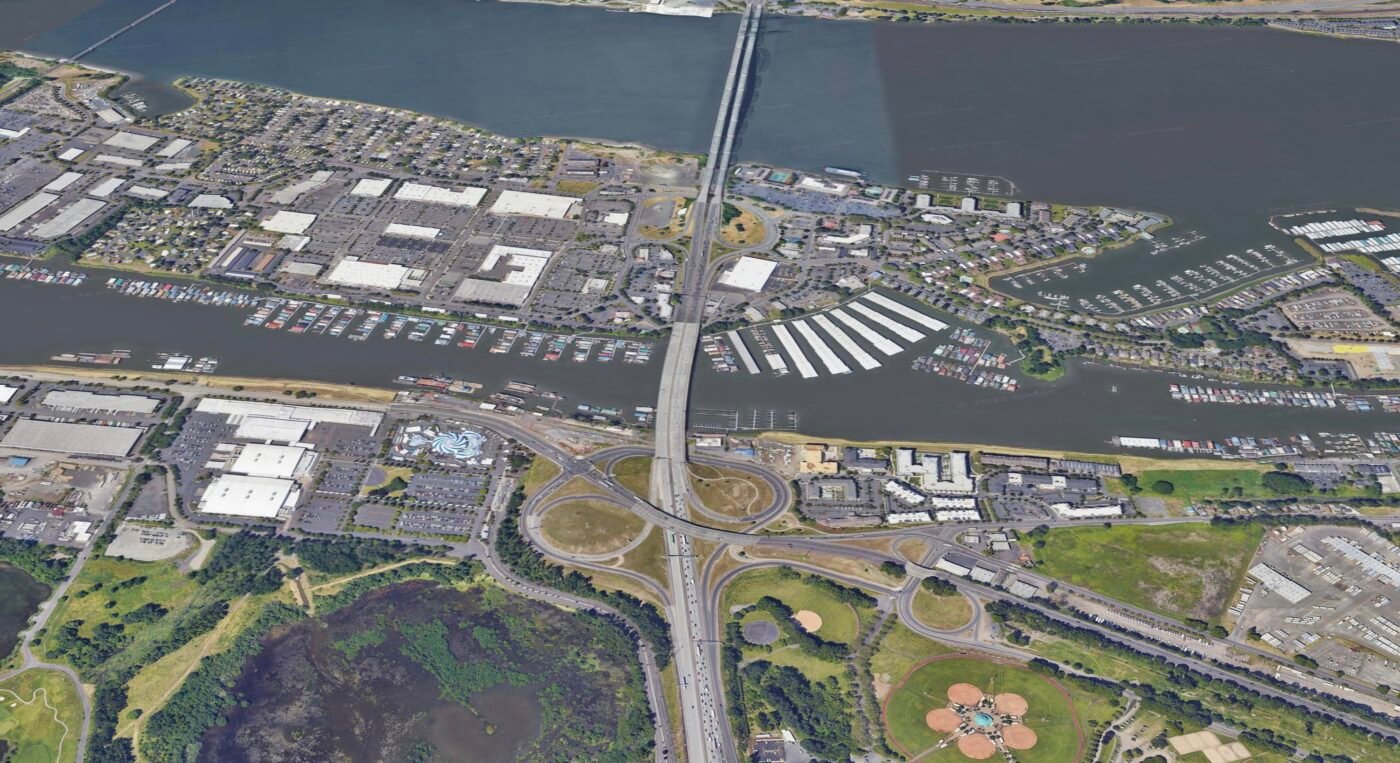While the effort to expand I-5 between Portland and Vancouver and replace the Interstate Bridge (a.k.a. the Interstate Bridge Replacement Program, or IBR) lumbers on, many questions remain about the $7.5 billion project — especially how it will impact Oregon’s greenhouse gas emission reduction goals.
A question on that topic came up during an exchange last month between a Portland cycling advocate and the project’s engineering manager. It was a notable back-and-forth that shows how project staff justify claims that the freeway megaproject will actually lower vehicle miles traveled (VMT) and won’t be terrible for the climate.
The exchange took place during a meeting of the PBOT Bicycle Advisory Committee on November 14th. It was between committee member David Stein and Casey Liles, engineering manager for the IBR. Their comments have been slightly edited for clarity.
David Stein:
“You spent a lot of time talking about climate change and addressing climate impacts, and yet, all of the potential [project] layouts involve even more lanes for cars and none actually are going to be studying the current set. And it doesn’t seem to jive with the large impact that transportation has on not only carbon emissions, but on other impacts like particulate matter that goes into the air and into into our waterways. There’s also the cost stewardship part that’s completely missed.
I’m really missing how this project is going to meaningfully address climate impacts when you’re talking about building more lanes for cars — auxiliary or otherwise, it’s still more lanes — and then surrounding transit with parking garages rather than housing and other buildings that would actually allow people to not have to drive… It just seems like there’s not even a good story to take out of this. And I’m wondering why we aren’t studying things that that might help to shrink the impact of this.”
Casey Liles:
“David,
The program Investment is estimated about $6 billion. A third of the investment for the program is transit and active transportation. A third. So the improvement of active transportation in this corridor is to connect over 60 miles of the light rail transit in the Portland metro to Vancouver, in which case there are three BRT [bus rapid transit] routes that are connecting to that light rail route.
I did mention the park-and-rides in Vancouver. [We] are studying the need for zero, one or two park-and-rides. I didn’t mention that. But that is a possibility — whether there’s maybe no park-and-rides rides in downtown, or up to two park-and-rides.
And again, the increase in ridership and mode share for transit and active transportation — that connection [between Portland and Vancouver] is not great today — you will see those benefits coming and published in the SDEIS [supplemental draft environmental impact statement, due for publication in early 2024].
As far as greenhouse gases go… One of the key elements of that is emissions from vehicular traffic. And one of the best ways to address that is getting people out of their single-occupant vehicles and getting them onto transit. I forgot to also mention the bus-on-shoulder that increases the express bus service into Portland. The other part of that is the treatment of all of the water in the five-mile corridor that is not treated today for freeway runoff. That treatment allows for getting the particulate out of the water runoff that is hazardous to fish and to the marine environment. Additionally, we expect that VMT goes down with the program… We would expect that, because we’re looking for a savings [in GHG emissions] due to that mode shift.
Again, to go back to the investments in the program: Major investments in opportunities for people to use other modes than their single-occupant vehicle, as well as the safety and congestion. We’re taking accidents, and hopefully a lift-bridge, off of the freeway where you have that additional congestion or additional rates of accidents — and the additional people sitting in congestion spewing their emissions.
So, all of those things are a very large part of the program to improve the air quality in the area.”
The next big milestone for this project will be the release of the supplemental draft environmental impact statement (SDEIS, a document required as part of the federal National Environmental Policy Act, or NEPA). Project staff say it’s due for release in early 2024.
If you’re hungry for information about this major project, the IBRP is hosting a public briefing tonight (Thursday, December 7th). The event is billed as a “virtual public briefing” and will take place online from 6:00 to 7:30 pm. Event details and sign-up link can be found here. There’s also a joint meeting of the Washington and Oregon legislative committees that oversee the project scheduled for December 15th.




